Results 6,651 to 6,660 of 12096
Thread: Anandtech News
-
01-18-17, 08:13 AM #6651
Anandtech: 3-Way Low Profile CPU Cooling Shoot-Out: Reeven, Phanteks, & Noctua
Today we're taking a look at horizontal CPU coolers from Reeven, Phanteks, and Noctua. Although horizontal CPU coolers are likely to always remain a niche market relative to their tower-style brethren, the continued growth in and shift to smaller form factor PCs has given them a higher profile among system builders as of late. Sometimes you cannot just buy the best cooler for the job for the simple reason that it will not fit into the system. This is particularly true for compact and/or narrow cases, especially those meant for ITX systems and horizontal placement. With the majority of typical CPU coolers being tower-type constructs, it is difficult to find one that fits inside compact case designs.
To that end we've grabbed a few horizontal coolers to take a look at this segment: the Reeven Steropes RC-1206b, the Phanteks PH-TC12LS and the Noctua NH-C14S. These three vertical coolers are all meant for desktop/HTPC designs but they also are significantly different in terms of size, giving users a range of options in trading off size with cooling capacity. The smallest of these coolers, the Steropes, starts us off at 60 mm tall, moving up to 74 mm with the PH-TC12LS, and jumping up to 115/142 mm with the NH-C14S.
More...
-
01-18-17, 10:45 AM #6652
Anandtech: ASUS ZenBook 3 Deluxe UX490UA: Kaby Lake, 16 GB RAM, 1 TB SSD, TB3, 14" FH
ASUS has now launched the latest addition to its ZenBook family of ultra-thin laptops with 14” displays. The new ZenBook 3 Deluxe UX490UA boasts with Intel’s latest Kaby Lake-U microprocessors, up to 16 GB of memory, up to 1 TB SSD along with an advanced audio sub-system, an updated keyboard and a fingerprint reader in a 12.9 mm-thick design that weighs around 1.1 kilograms (2.4 lbs).
ASUS’ ZenBook is among the most popular families of ultra-thin laptops on the market today that competes against the likes of Apple's MacBook, Lenovo's ThinkPad X1 as well as the HP Spectre. The PCs come with fully-fledged Intel Core processors along with a choice of high-capacity SSDs as well as a rather decent spec list in general. As it appears, ASUS decided to improve ZenBook’s design further by adding a larger 14” display, a high-capacity 46 Wh battery, an advanced audio sub-system co-designed with Harman Kardon, a trusted platform module as well as two Thunderbolt 3 ports and a USB 3.1 Type-C port. The Deluxe version of the ZenBook 3 laptop weds business features with multimedia capabilities, style and expandability options: a rather rare combination.
The ASUS ZenBook 3 Deluxe UX490UA is based on the Intel Core i5/i7 processor with integrated HD Graphics 620 and Microsoft’s Windows 10 Pro operating system. Different versions of the ZenBook 3 Deluxe UX490UA will be equipped with 8 or 16 GB of LPDDR3-2133 DRAM as well as up to 1 TB PCIe 3.0 x4 SSD. For connectivity, the laptop uses an 802.11ac Wi-Fi + BT 4.1 wireless module, has one USB 3.1 Type-C header (which is also used for charging) and is equipped with two Thunderbolt 3 ports that can work in DisplayPort 1.2 and USB 3.1 Gen 2 modes. The laptop can be connected to 4K displays, an external GPU and an external storage system, greatly expanding its capabilities. To ensure that the PC does not overheat or throttle, ASUS uses a new 3-mm thick cooling solution that it expects to be efficient enough for the CPU and the SSD.ASUS ZenBook 3 Deluxe UX490A at Glance UX390UA-XH74-BL UX390UA-DH51-GR Display Resolution 1920×1080 Panel 14" IPS
178° viewing angles
100% sRGB
Corning Gorilla Glass 5SoC Intel Core i7-7500U
2C/4T,
2.7-3.5 GHz,
15W,
Intel HD 620Intel Core i5-7200U
2C/4T,
2.5-3.1 GHz,
15W,
Intel HD 620RAM 16 GB LPDDR3-2133 8 GB LPDDR3-2133 Storage 256 GB SATA SSD
512 GB NVMe PCIe 3.0 x4 SSD
1 TB NVMe PCIe 3.0 x4 SSDCamera VGA webcam Wireless 2×2 802.11ac Wi-Fi
Bluetooth 4.1I/O ports 2 × Thunderbolt 3/USB 3.1 Type-C Audio 4 × Speakers (co-designed with Harman Kardon)
1 × TRRS 3.5-mm jack for headsetDimensions 329 × 216 × 12.9 mm Weight 1100 grams Battery 46 Wh OS Windows 10 Pro 64-bit Fingerprint Sensor Yes Finish Royal Blue
Silver GrayAvailability Available at ASUS Store and retailers
ETA date unknown
Like other high-end ZenBook laptops, the UX490UA comes in unibody enclosure made of an aluminum alloy that is said to be stronger compared to a standard aluminum alloy. To protect the display, the ZenBook 3 Deluxe uses Gorilla Glass 5 from Corning. Meanwhile, depending on configuration, the new ZenBook will come in a blue or a gray finish. It is worth noting that unlike some other Zenbook high-end models (such as the Zenbook Infinity), as far as we can tell, this device will not be touch screen enabled.
ASUS did not announce pricing of its ZenBook 3 Deluxe UX490UA machines, but given that the PC will exist in multiple configurations, it will vary quite significantly. For example, ASUS’ ZenBook 3 non-Deluxe laptops are available for $1099 and $1599, depending on specs. Keep in mind that the Deluxe versions of ASUS products are naturally positioned above the rest, so expect the ZenBook 3 Deluxe to come at a premium.
Gallery: ASUS ZenBook 3 Deluxe UX490UA: Kaby Lake, 16 GB RAM, 1 TB SSD, TB3, 14 Inch FHD, 1.2 Kg





Related Reading:
- ASUS PRO B9440: Durable Ultra-Thin Business Laptop with 10-Hour Battery for $999
- Launch Update: ASUS ZenFone 3, Zenbook 3, ZenWatch 3, ZenPad 3S 10
- ASUS Announces the Zenbook 3: A Macbook Competitor with Core i7, 16GB DRAM and 1TB SSD
More...
-
01-18-17, 12:26 PM #6653
Anandtech: ADATA Demonstrates 256 GB microSDXC Card
At CES, ADATA showcased its first microSDXC memory card with 256 GB capacity. The card is qualified for up to 275 MB/s transfer speed and can be used to record UHD and 360° videos. The manufacturer did not formally announce the product, but the product on display should indicate that the company plans to release it in the foreseeable future.
The ADATA microSDXC 256 GB memory card is based on 3D MLC NAND flash memory from SK Hynix, uses the UHS-II bus as well as is rated for up to 275 MB/s maximum read speed and up to 260 MB/s write speed when installed into an appropriate device. The new card carries Class 10, U3 and V90 labels meaning that its performance does not drop below 90 MB/s and it is suitable for recording 2Kp120, 4Kp120 and 8Kp120 videos.
ADATA is the second independent supplier of NAND flash-based devices to introduce a microSDXC card with 256 GB capacity after Patriot. Moreover, ADATA is also among the first to introduce a 3D NAND-based memory card with the UHS-II bus that is designed for the high end of the market.
In fact, use of 3D MLC NAND flash memory for memory cards is important in general because it demonstrates that IC makers are ramping up production of 3D NAND and supply such memory to third parties. One of the advantages that 3D MLC NAND has over TLC NAND made using a thin planar process technology is higher endurance and potentially higher reliability. In addition to the 256 GB microSDXC, ADATA also uses 3D NAND for other SD cards as well as for lower-capacity cards.ADATA micro SDXC 256 GB Card Specifications Write Speed 260 MB/s Read Speed 275 MB/s NAND Type 3D NAND SDA Labels UHS-II, U3, Class 10, V90
ADATA did not announce pricing of its 256 GB microSDXC card, but given performance and positioning, we expect the device to have a professional-grade price tag.
Gallery: ADATA Demonstrates 256 GB microSDXC Card: 3D NAND, 275 MB/s, UHS-II, V90 Rated

Related Reading:
- Patriot Introduces LX 256 GB microSDXC Card with Class 10, U3 Certifications
- The SD Card Association to Classify IOPS Performance of Memory Cards via Logo
- Western Digital Rolls Out 256 GB SanDisk microSDXC Memory Cards
- SD Association Announces SD 5.0 Specification: SD Cards For UHD and 360° Video Capture
More...
-
01-18-17, 02:33 PM #6654
Anandtech: ASRock Shows DeskMini GTX/RX, using Micro-STX Motherboard with MXM Support
One of the recurring themes in my discussions with motherboard manufacturers over the past several years is one of introducing differentiation to products and through that, new form factors. When mini-STX was shown by Intel last year as a different form factor focusing just on the processor rather than PCIe lanes, we saw the launch of several small-sized PCs, mainly for embedded functions, that could leverage a full desktop-class CPU and socket. As always with CPU-only products, some users request a little more graphics oomph, so insert ASRock’s new ‘micro-STX’ type of motherboard and mini-PC that uses MXM-type graphics.
Unfortunately our trip to ASRock at CES was curtailed due to other meetings overrunning, but it was interesting to note that ASRock was at the show formally with a suite, rather than just casually taking coffee meetings the previous two years that I had been. So all our pictures in this piece are from the Small Form Factor Network, and many thanks to them.
The mini-STX form factor is based around a 5-inch by 5-inch motherboard design, which gets you enough space for a socket, some memory and some IO. With this micro-STX motherboard, ASRock is clearly going at length to support more: the MXM module bay takes up the whole second half of the motherboard, and one key thing to note here is the socket area.
On the left-hand side, where we would normally expect to see the IO, we have Intel’s recommended socket area marked. Normally this is left near-blank to account for coolers and such, but ASRock as engineered the rear IO right up to the socket itself, and using low profile IO ports to allow a cooler to fit. Because of the way mini-STX platforms work with few power phases, these are solely above the socket as not to interfere with to the left of the socket.
On the front side of the board, the chipset is nowhere to be found. That’s because it is on the back, along with the CR2032 battery and three M.2 ports. Because of the chipset support, all three are PCIe 3.0 x4 capable, with spacing for 2260 and 2280 sized M.2 ports. For good measure, there’s also an M.2 WiFi port.
Front functionality comes through a USB 3.0 Type-A, a USB 3.0 Type-C (ASRock in their sign claim this is USB 3.1 and Thunderbolt 3, however I cannot see an ASMedia ASM1142/ASM2142 nor an Alpine Ridge controller for this), and two audio jacks from the Realtek ALC283. The front uses an Intel I219-V gigabit Ethernet controller, two USB 3.0 ports, an HDMI port, HDMI 2.0 port (via MCDP2000), a DisplayPort adaptor, a mini-DP port, and a DC-In jack.
It’s worth noting that the specifications list also has two SATA ports on the description, but like the TB3 controller, I can’t see them on the pictures, front or rear.
As a system, the 2.7-liter DeskMini GTX/RX will feature a Core i7-7700K using an Intel stock cooler (so don’t expect much in the way of overclocking), support for up to 16GB of DDR4-3200 SODIMM (not sure why it’s not 32GB, perhaps z-height?), a 128GB Samsung 961 M.2 SSD, and an MXM Type-B graphics card: either a GTX 1060 for the GTX model, or an AMD RX card for the RX version. The PSU is rated at 220W, which can limit options.
Personally, I’d prefer a solid copper cooler on there for a Core i7, but a Core i5/i3 would do OK with the stock cooler.
Prices and release date are unknown.
Gallery: ASRock Shows DeskMini GTX/RX, using Micro-STX Motherboard with MXM Support





More...
-
01-19-17, 09:23 AM #6655
Anandtech: Seagate Launches 1 TB and 2 TB Enterprise Capacity 3.5-inch HDDs
Seagate has quietly added two enterprise-grade HDDs to its Enterprise Capacity lineup of hard drives. While the 'Enterprise' name has recently implied high-density products, the new 3.5” drives only store one or two terabytes of data and are aimed at businesses seeking for high reliability, 512 bytes sector size, but not a lot of storage space.
In the recent years, we observed two main trends on the market of HDDs: the number of drives sold has been decreasing because of strong competition from SSDs, but their average capacities have been increasing because of new technologies (e.g., helium, SMR, the evolution of PMR, etc.). Enterprises and operators of cloud data-centers are the primary consumers of high-capacity hard drives because such drives help them to reduce their footprint and optimize power consumption. Since such HDDs are used in multi-drive RAID environments and are subject to heat and vibrations, they are based on special platforms that ensure their long-term reliability (by using a motor attached to both top and bottom covers, dual-plane balance control, improved heads, special firmware and so on). Because such drives offer higher capacity, they are harder to make and test. Also, on top of a longer typically-business style warranty, they naturally cost more than desktop-class HDDs. Meanwhile, due to overall benefits they bring, cloud service providers and enterprises are willing to pay a premium for such HDDs. As it appears, there are also customers who need hard drives with improved reliability and performance, but who are not interested in very high capacities or the latest technologies.
The new Seagate Enterprise Capacity 3.5 HDDs with 1 and 2 TB capacities are based on the latest PMR platters and feature a native 512-byte block size, which is a requirement of some legacy applications. The HDDs have a 7200 RPM spindle speed, 128 MB cache and a SATA 6 Gbps interface. When it comes to performance, Seagate declares 194 MB/s max sustainable transfer rate, 4.16 ms average latency and up to 7 W power consumption. The 1 and 2 TB versions of the Enterprise Capacity 3.5 HDDs are rated for 24/7 operation, up to 550 TB/year TBW and offer all the enterprise-grade features that the higher capacity models, including on-the-fly error-correction algorithms, PowerChoice technology (enables data-center managers to lower power consumption of HDDs during idle time), RAID rebuild feature and so on.
Seagate did not announce exact pricing of its Enterprise Capacity 3.5 HDDs with 1 and 2 TB capacities. It is logical to expect such drives to cost less than higher capacity models, but do not expect them to cost like desktop HDDs because we are talking about models with enterprise features, which are physically different to other hard drives. Seagate targets very specific SMB and enterprise customers with its entry-level Enterprise Capacity 3.5, so, pricing per-GB will not be a bargain. Meanwhile, the HDDs are covered with Seagate’s five-year warranty and have MTBF rating of two million hours.Seagate Enterprise Capacity 3.5" HDDs v5.1 Seagate Enterprise 3.5
ST1000NM0008
ST1000NM0018Seagate Enterprise 3.5
ST2000NM0008
ST2000NM0018Capacity 1 TB 2 TB RPM 7200 RPM Interface SATA 6 Gbps DRAM Cache 128 MB Maximum Sustained Transfer Rate 194 MB/s Average Latency 4.16 ms Rated Workload Equivalent of 550 TB of Writes per Year Acoustics Idle 2.2 bels (typ)
2.4 bels (max)Seek 2.6 bels (typ)
2.8 bels (max)Power Rating Idle 4.7 W Operating 7 W MTBF 2.0 million hours Warranty 5 Years
Related Reading:
- Seagate to Shut Down One of Its Largest HDD Assembly Plants
- LaCie Launches 6big and 12big: Up to 60/120 TB External Storage with Thunderbolt 3
- Seagate Introduces New Generation of Enterprise Performance 15K HDDs with NAND Caching
- Seagate BarraCuda Pro 10TB Helium HDD Capsule Review
Sources: Seagate, The Register.
More...
-
01-19-17, 10:34 AM #6656
Anandtech: Logitech Launches G203 Prodigy Gaming Mouse with A New 6000 DPI Sensor
Logitech this month introduced its new G203 Prodigy gaming mouse that combines a classic design with a high-resolution sensor, programmable buttons and RGB LED lighting. What is important is that the mouse is considerably less expensive than typical gaming mice.
Computer mice have greatly evolved in the past decade as manufacturers try to offer better ergonomics for different types of users and applications. Many mice today feature additional buttons and/or a rather fancy shape because their producers try to address hardcore gamers or prosumers looking for maximum comfort during their many-hour game or work sessions, with many users preferring different grips and layouts. The Logitech G203 Prodigy is a departure from the concept of complex design that brings ergonomics back to basics — the new mouse resembles a simplistic shape that popular mice are known for, but without sacrificing usability.
The Logitech G203 Prodigy is based on one of the company’s in-house-developed sensors with on-the-fly adjustable resolution (200-6000 DPI) along with an ARM processing core that supports USB report rate of 1000 Hz (appropriate software is required for relevant operating systems). Just as in the case of the higher end devices, the G203 Prodigy can be completely reprogrammed using Logitech’s software and then used on different PCs since button configuration is stored inside the mouse. Finally, developers of the G203 could not ignore the trend and installed a programmable RGB LED into the G logotype on the mouse.
One of the important aspects of the Logitech G203 Prodigy is its price: the company sells it for $39.99 in the U.S. and for €44.99 in the E.U., which is below the price of typical gaming mice that may retail for well over $100. Knowing that Logitech develops its product designs, high-resolution sensors and other components in-house, it is likely that the creation of the G203 Prodigy is a response to the demand of potential customers rather than an attempt to address a lower-end market segment currently controlled by various bulk production companies with a cheap product. The G203 Prodigy is made in Switzerland and thus passes all the rigorous tests that Logitech uses to ensure the quality of its products. Therefore, along with the relatively affordable price, the new mouse from Logitech promises to deliver everything that the consumer comes to expect from a G-series mouse
Meanwhile, an interesting thing to consider is that the price of the Logitech G203 Prodigy will be very attractive not only to gamers who do not need fancy design, adjustable weight or plenty of additional buttons, but also makers of higher-end PCs designed for gamers. The G203 Prodigy is the most affordable gaming mouse from the company and thus becomes a good candidate to be supplied with pre-built systems.
Gallery: Logitech Launches G203 Prodigy Gaming Mouse with Classic Look and 6000 DPI Sensor





Related Reading:
- Logitech 2014 Switzerland Tech Day: The Hills Are Alive With The Sound Of Romer G
- Logitech Announces The Ambidextrous G900 Chaos Spectrum Gaming Mouse
- Logitech Formally Exits OEM Mouse Market
- The Logitech G910 Orion Spectrum Mechanical Keyboard Review
- Logitech Acquires Saitek Brand and Product Lines, Expands Its Sim Controllers Biz
More...
-
01-19-17, 12:11 PM #6657
Anandtech: Toshiba Is Studying The Possibility of Spinning Off NAND Flash Production
Toshiba on Wednesday confirmed that it is studying the possibility of splitting its NAND flash business into a separate company. While nothing has been decided as this point, the Japanese tech firm needs money and it may sell a stake in its memory business to Western Digital or another investor, based on unofficial reports.
In the recent months, Toshiba ran into a new accounting scandal that may require it to write down as much as 4 billion dollars because of cost overruns at its U.S. nuclear power business. The exact number has not been finalized, but the company is already studying various possibilities to offset the massive loss, which would anger its investors after the company already faced an accounting scandal in 2015. Nikkei reports that Toshiba is mulling to spin off its semiconductor business into a separate entity and then sell a 20% in the new company to someone like Western Digital for about $2.7 billion, while retaining 80% stake as well as operational control of the unit.
Toshiba confirmed that it is studying the possibility of its memory business spin-off, but noted that no decision has been made and that the in-house NAND production is a focal business.
Toshiba and Western Digital already operate the world’s largest NAND flash production complex in Yokkaichi, Mie prefecture, Japan. Formally, the manufacturing facilities belong to joint ventures between the two companies and WD buys wafers from Toshiba. It is not completely clear how the spinoff would work in this case and which parts of Toshiba’s business will be up for sale.
For Toshiba, NAND flash production is indeed strategically important because it enables it to produce all types of storage devices in-house. Today, Toshiba makes HDDs, SSDs as well as various types of removable storage at its own fabs using its own components. The only other company that can manufacture all types of storage products using its own media is Western Digital, while companies like Samsung and Seagate lack either HDDs or NAND flash.
One of the important things to note is that production joint ventures owned by Toshiba and Western Digital are unlikely to make a lot of money directly because they sell wafers at near-cost to their owners who then earn profits by selling SSDs, memory cards, bulk NAND flash and other devices to their customers. Therefore, if Toshiba is to sell a stake in its semiconductor production business, it needs to sell it to a company that can then use the chips to build products and make some money. Obviously, Western Digital would be a perfect investor because it already has everything needed to produce actual storage devices, but a rumor has it that it is not the only investor considered by Toshiba.

Meanwhile, Toshiba’s plan to spin off its NAND flash business into a separate company may have a significant impact on the market of storage devices in general. Nowadays, Toshiba and Western Digital jointly invest in the development of NAND flash as well as manufacturing process technologies. Changes of the ownership may alter Toshiba’s investments not only in terms of money, but also in terms of R&D spending by the company. In any case, according to reports, no decision has been made.
Related Reading:
- Toshiba Finalizes Plans for New 3D NAND Fab: Coming Online in 2019
- The Toshiba OCZ VX500 (256GB, 512GB, 1024GB) SSD Review
- Toshiba Announces New BGA SSDs Using 3D TLC NAND
Sources: Toshiba, Nikkei, Reuters.
More...
-
01-19-17, 02:10 PM #6658
Anandtech: Fujitsu Announces 13.3" Lifebook U937/P and UH75/B1: 7th Gen Core i5, 8hr
Fujitsu has introduced its new Lifebook U937/P notebook that weighs under 800 grams (1.76 lbs), but offers a fully-fledged Intel Core i5 Kaby Lake-U processor as well as a 13.3” display with FHD resolution. The notebook is designed for business users and thus comes with features like a fingerprint reader.
Fujitsu did not announce many details about its Lifebook U937/P, but only said that the laptop is based on the 7th generation Intel Core processor (which, given the timing of the announcement, implies on the Kaby Lake-U), weighs less than 799 grams (1.76 lbs) in its default configuration, is 15.5 mm thick and comes in black or red.
Despite the introduction, no real details other than those above were disclosed. Despite this, a lower weight notebook for the Japan market was also disclosed - the Lifebook UH75/B1. This is a lower-cost laptop, that is also 15.5 mm thick but weighs only 777 grams (1.71 lbs).
Specifications of the Fujitsu Lifebook UH75/B1 will hardly exactly match specs of the Lifebook U937/P since the systems are priced differently, but they give an idea what to expect. The UH71/B1 notebook is based on the Intel Core i5-7200U (2C/4T, 2.5 GHz, HD Graphics 620) SoC and is equipped with 4 GB of DDR4-2133 memory (Ian: is that single channel?) as well as a 128 GB SSD. When it comes to input/output capabilities, the Lifebook UH75/B1 offers a 802.11ac Wi-Fi + BT 4.1 wireless module, three USB 3.0 ports (two Type-A, one Type-C), an SD card reader, an HDMI output, a TRRS audio connector, a webcam and a fingerprint reader. As for the battery, the notebook comes with a 25 Wh accumulator that can power it for eight hours.
The Lifebook U937/P and the Lifebook UH75/B1 are among the lightest 13.3” laptops ever produced and will be among the lightest on the market. At the same time, it is noteworthy that the UH75/B1 only has 4 GB of memory and 128 GB of storage space, which is not a lot by today’s standards and may be considered not enough by many users on the go. By contrast, Samsung’s recently updated Notebook 9 weighs 816 grams, but comes with 8-16 GB of DDR4 and a 256 GB SSD. Moreover, Lenovo’s LaVie Z (introduced in 2015) not only had more memory and a larger SSD, but also a higher screen resolution. On the other hand, ultrathin and ultralight laptops are usually full of compromises because various people have different requirements and fulfilling requests of one group means introducing limitations for another. The one common feature through these is that the sub-1.8 lb laptop market is dominated mostly by entrants focusing on the Japanese market.Fujitsu Lifebook UH General Specifications UH75/B1
(Japan Only)U937/P
(Regions unconfirmed)Display 13.3" non-glossy panel with 1920×1080 resolution SoC Intel Core i5-7200U
2C/4T,
2.5-3.1 GHz,
15W,
Intel HD 620Kaby Lake-U RAM 4 GB DDR4-2133 Probably 8GB+? Storage 128 GB SSD Probably 256GB+ ? Camera 720p webcam Maybe FHD? Wireless 802.11ac Wi-Fi
Bluetooth 4.1I/O ports 2 × USB 3.0 Type-A
1 × USB 3.0 Type-C
1 × HDMIAudio Integrated speakers
1 × TRRS 3.5-mm jack for headsetDimensions 309 × 212 × 15.5 mm Weight 777 grams 799 grams Battery 25 Wh 25 Wh? OS Windows 10 Home Win10 Home/Pro? Fingerprint Yes Finish Red
BlackAvailability February 2017
¥190,000 (~$1660)February 2017
¥284,900 (~$2486)
Fujitsu plans to start selling the Lifebook UH75/B1 in Japan in mid-February for ¥190,000 (~$1660). ETA of the Lifebook U937/P is February, but we do not know whether it is early or late in the month. Meanwhile, the price of the product will be ¥284,900 (~$2486), which is considerably higher than the price of the UH75/B1 and implies on better specifications (e.g., a better SoC, more memory, a higher capacity SSD, etc.).
Related Reading:
- Samsung Updates Notebook 9: Kaby Lake, USB-C, Starts at 816 Grams
- ASUS ZenBook 3 Deluxe UX490UA: Kaby Lake, 16 GB RAM, 1 TB SSD, TB3, 14" FHD, 2.4 lbs
- Lenovo Reveals Yoga 910 Convertible: Intel’s Kaby Lake Meets 4K Display and Ultra-Thin Form-Factor
Sources: Fujitsu, PC Watch.
More...
-
01-20-17, 07:30 AM #6659
Anandtech: The Microsoft Surface Studio Review
Microsoft has only been in the PC system game for a few years now, but over the last couple of years they have made a lot of progress rather quickly. These days they have a solid foundation of products available, with the Surface Pro 4 being one of the best convertible tablets, the Surface Book being a very solid convertible laptop, and also the more specialized products like the Hololens, and Surface Hub. Going into their October 2016 event, the one missing piece of their PC product lineup was a desktop computer, but with the announcement and release of the Surface Studio, that particular gap has now been filled.
More...
-
Thread Information
Users Browsing this Thread
There are currently 9 users browsing this thread. (0 members and 9 guests)





 Quote
Quote
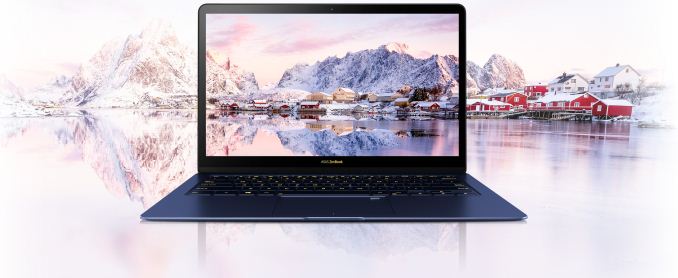


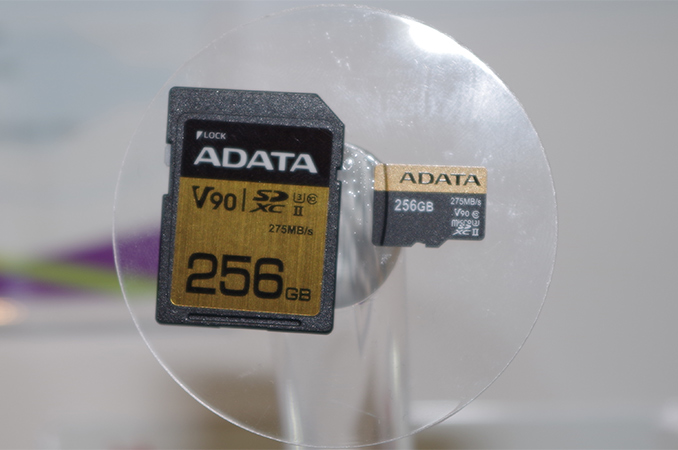
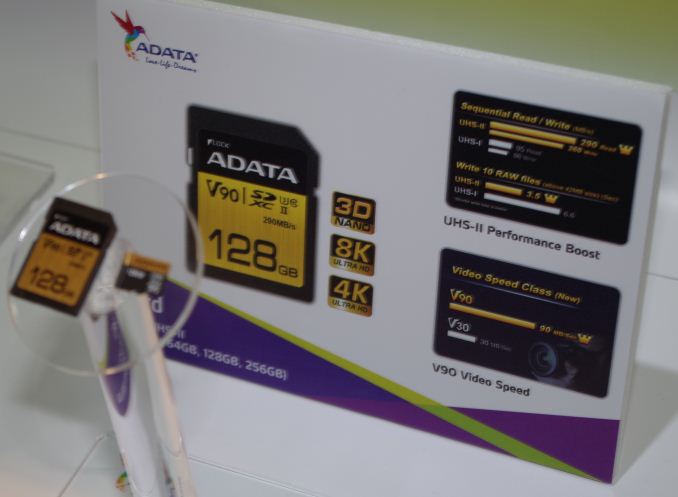




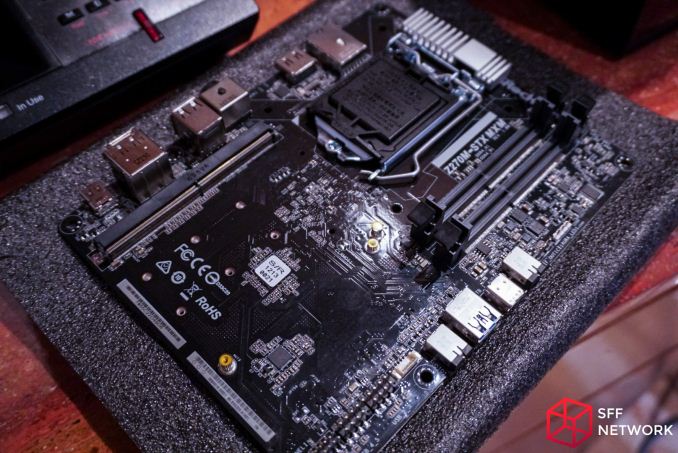
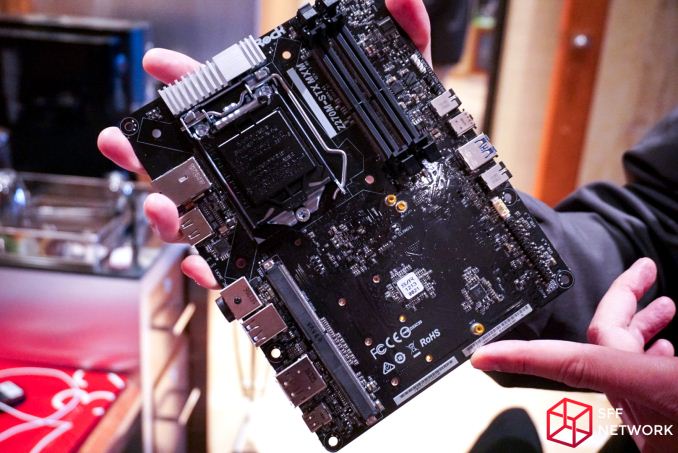
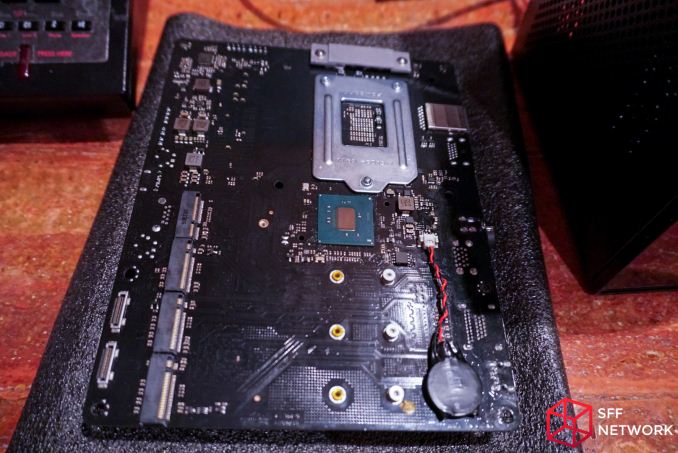
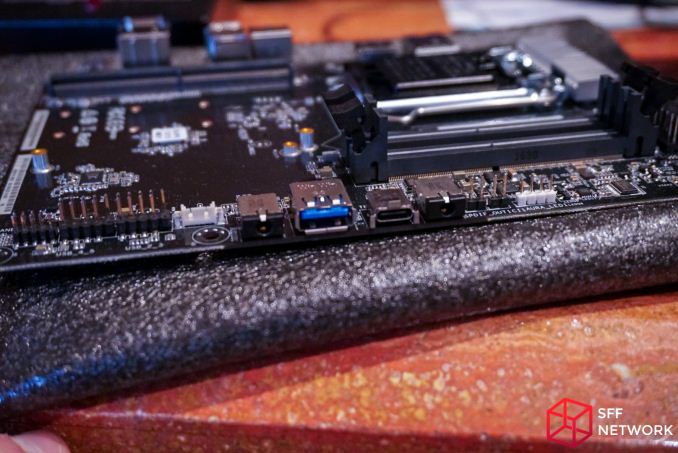
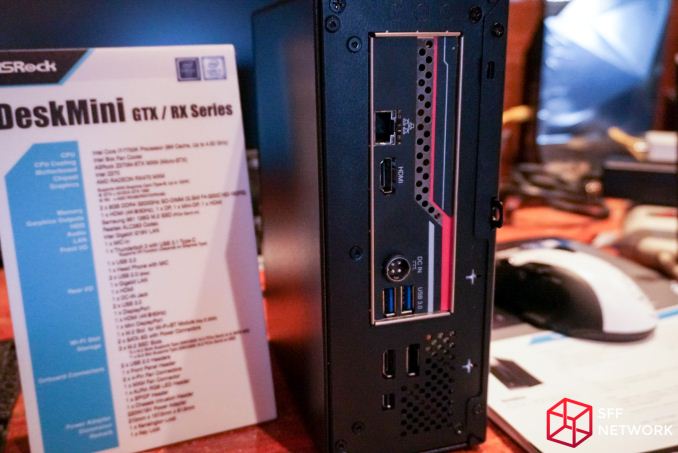
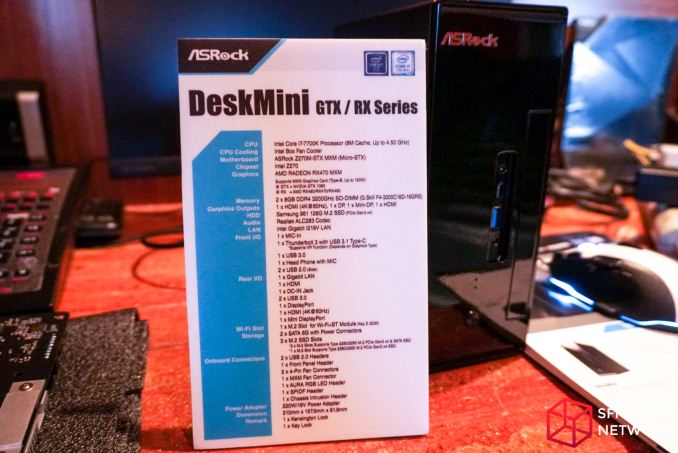
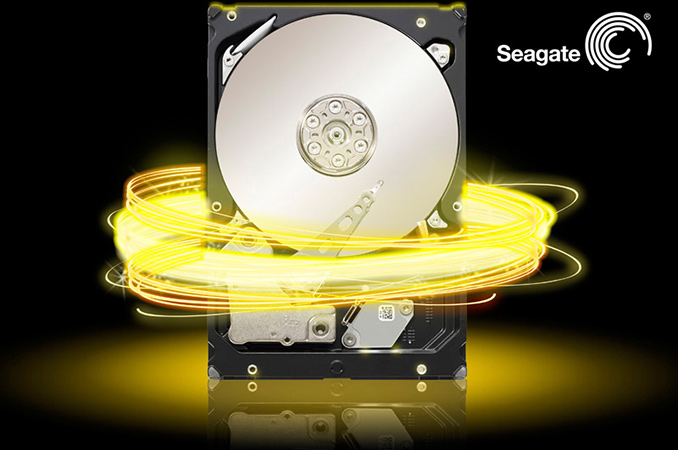
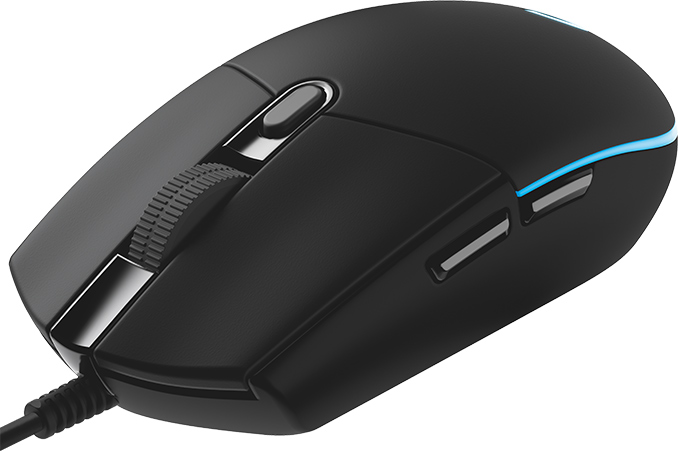
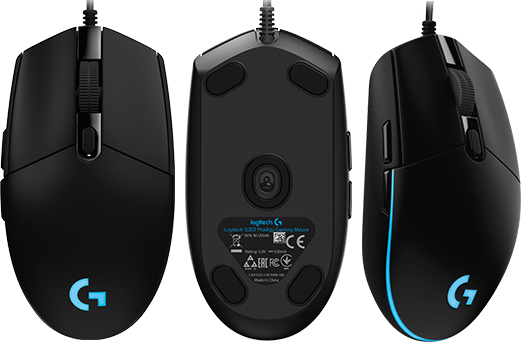
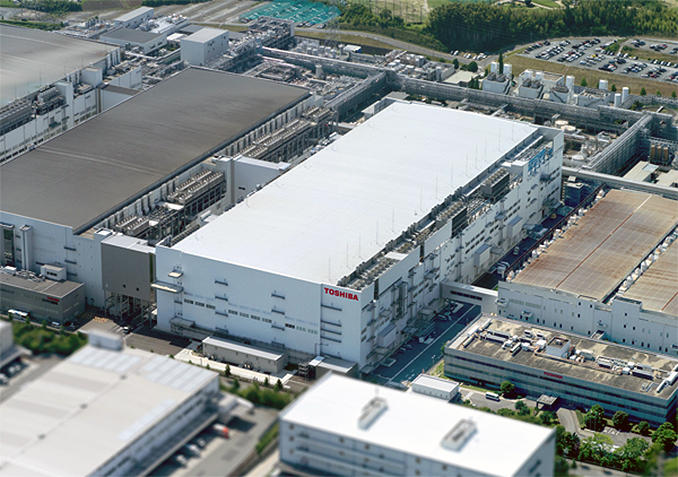
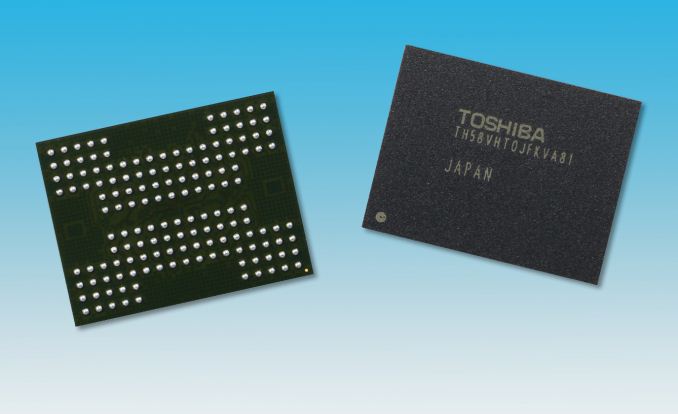
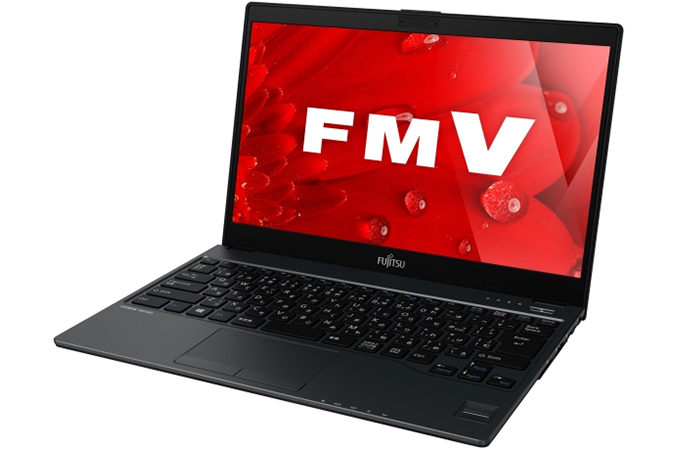
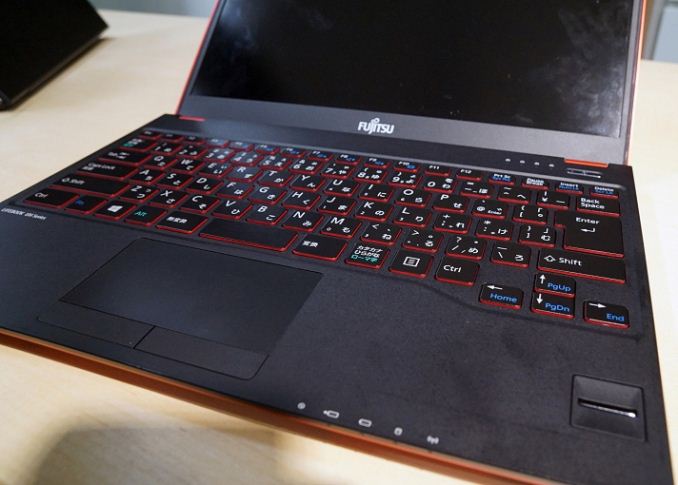

























Bookmarks